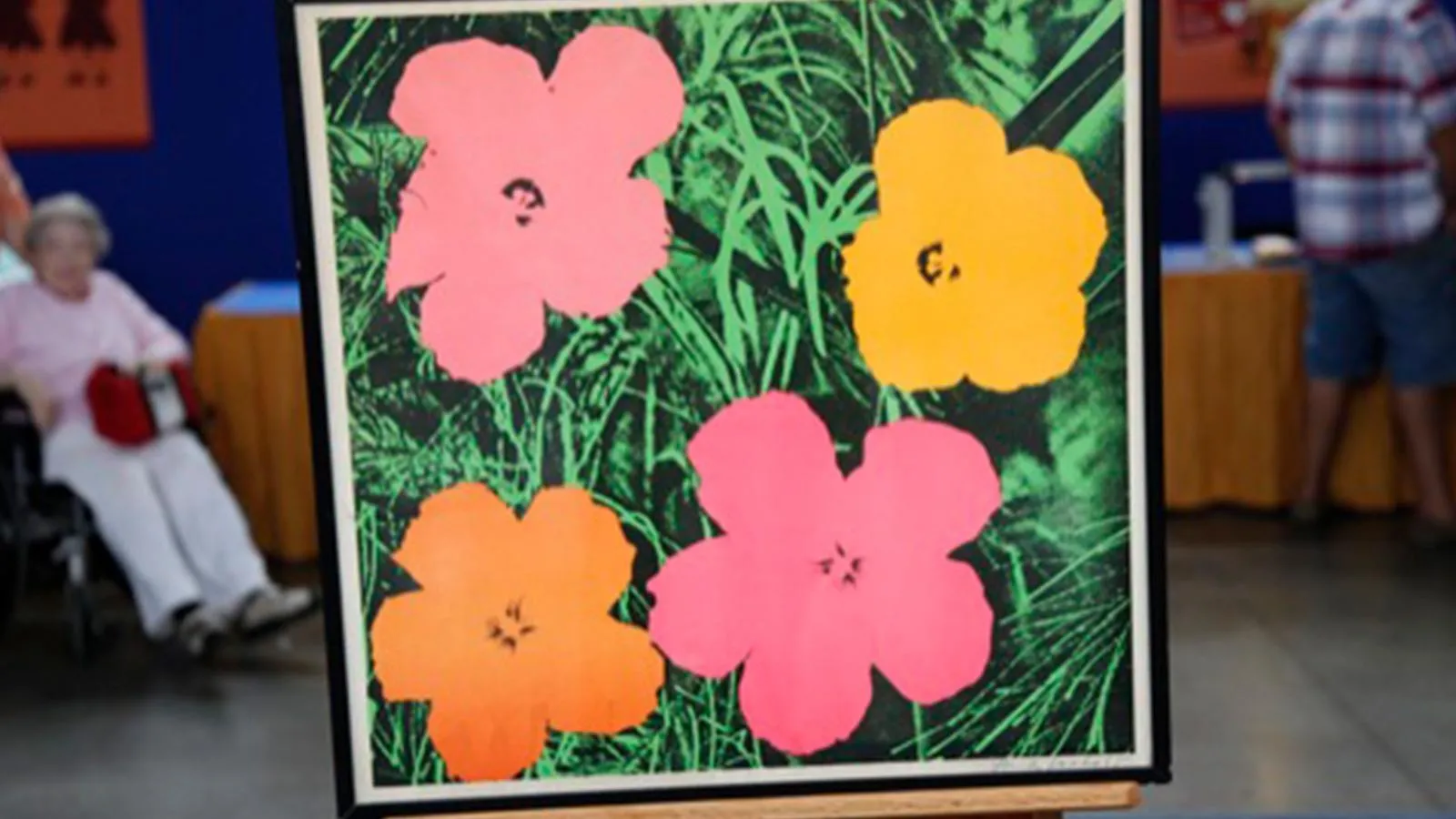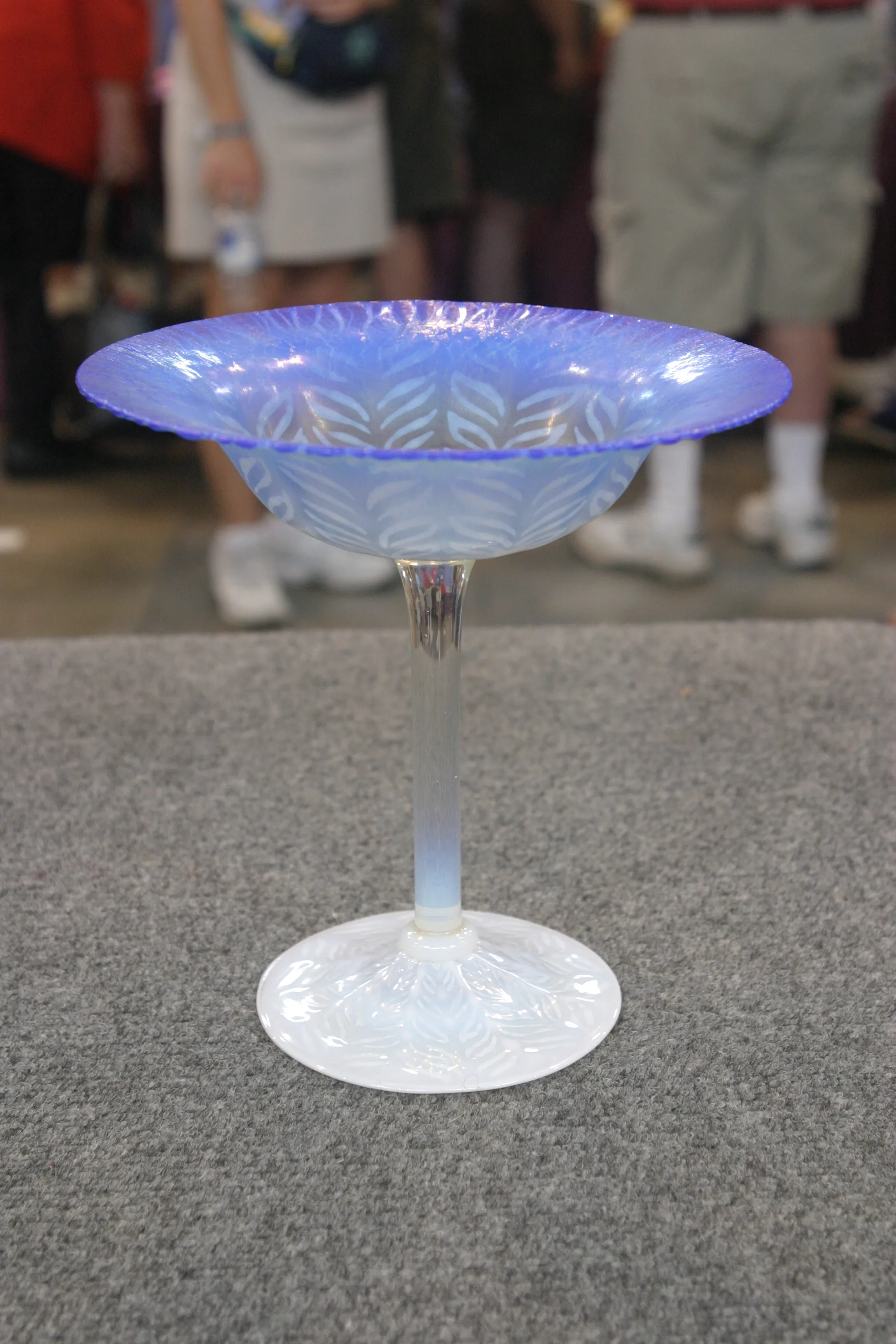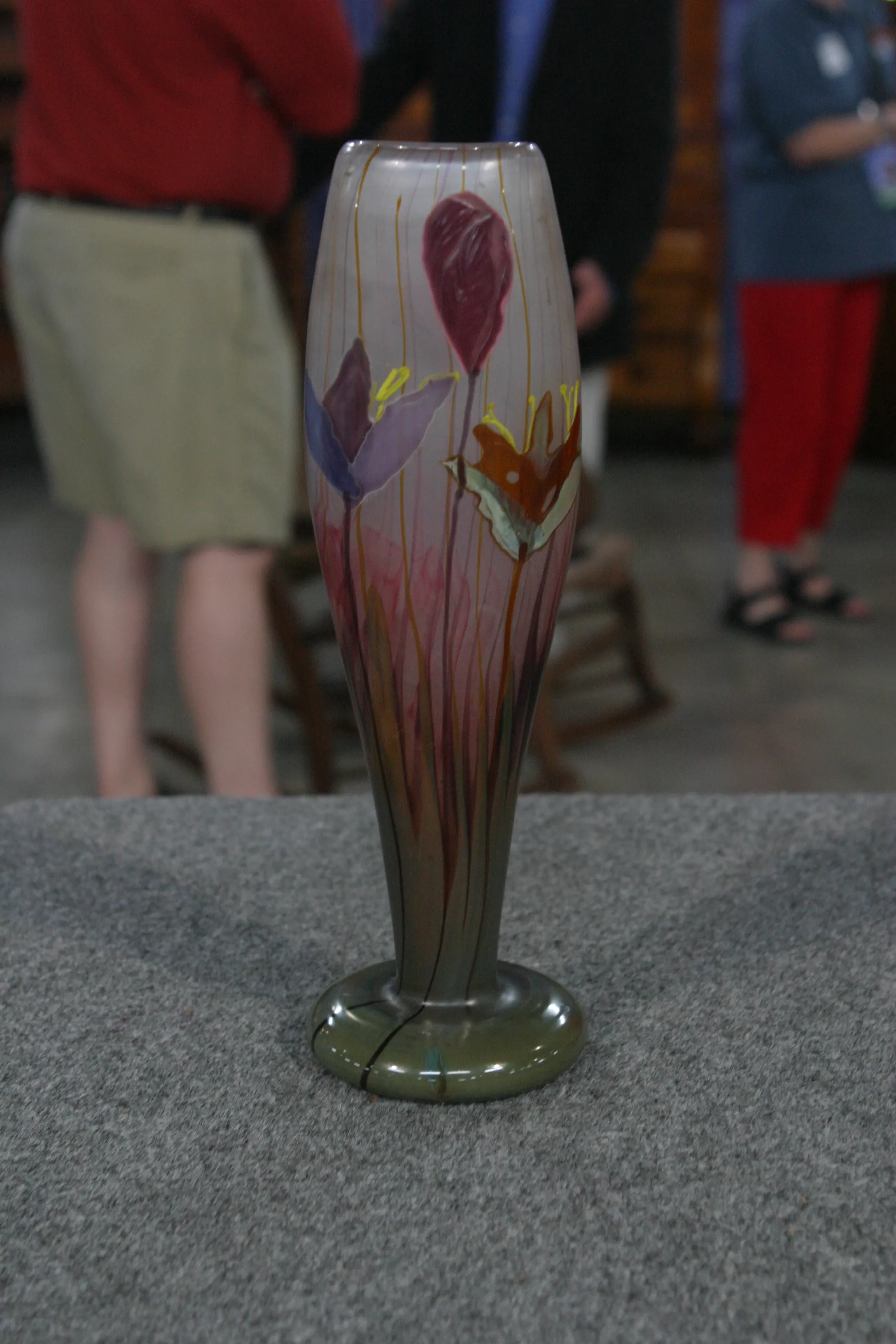GUEST: All I know is that my brother owned it. He loved art glass, and my mother now has it in her collection of paperweights.
APPRAISER: It's interesting, because it would really fall more into the category of, of paperweights than art glass. It is French, and the blue glass is called opaline. Now, the French did lots of opaline. You find blue opaline, and green and pink and white. The three major French crystal houses-- Baccarat, Saint-Louis, and Clichy, who worked in the 19th century-- all produced this type of glass. This would have been made during the classic period that the French did paperweights, which is the 1840s to '60s. Normally, you would find a white goblet or decanter, and they would take the blue glass and coil it around as a snake and do it on the outside of a form.
GUEST: Oh, okay.
APPRAISER: But here, they actually coiled the glass and made a three-dimensional snake paperweight as an individual object. Now that's very unusual. And the top of it is, is beautifully gilded. And if you look from the bottom, what you have is just the, the opaline. So it's a blue glass with a nice shine, and it's a great color.
GUEST: I think that's why we all love it, is the color.
APPRAISER: There is one example of a salamander done by Pantin that isn't free-forming. Otherwise, I haven't seen an opaline animal.
GUEST: Really?
APPRAISER: In this timeframe, you would not expect it to be marked. If it was marked, you'd be suspicious. It was not something that the French did. But it is a most unusual item. If it was a nice coiled snake on a goblet, it would be a few hundred dollars. But just the coiled snake, gilded, as a paperweight itself, I would put a value of about $2,500 to $3,500 on it right now.
GUEST: Oh! How exciting. (laughs)
APPRAISER: It's a great thing, and it's really a marvelous piece of French 19th-century glass. And I want to thank you for bringing it in.
GUEST: Well, thank you very much, and now we're all going to be fighting over the snake, so thank you.











